|
-
9th August 23, 05:31 PM
#1
when the change
Does anyone know when the third buckle was added to the kilt. I know you can order kilts with just two buckles, when did three become the norm?
-
-
9th August 23, 10:58 PM
#2
The way it was explained to me is that the period between the Crimean war and WWI was a time of great change in the wearing of the kilt. Before, there was little standardization in how a kilt was made or worn. You could see kilts pleated all around. Kilts fastened with fabric or ribbon ties. And held on with nothing at all other than friction or perhaps pinned with a blanket pin. (What we today think of as the classic diaper style kilt pin.) Many military kilts would be made from the full width of fabric. About 27 inches.
By the time of the Boer war we began to see the bottom of the kilt become sort of standard at the top of the knee cap. So the top of the kilt often ended up very high. This was almost always covered by the tunic which had a belt at the anatomical waist which also held the kilt up.
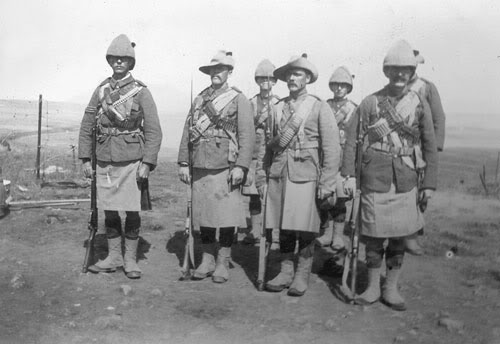
You would not normally be able to tell how high the top of the kilt was because of the tunic, but if you ever saw the kilt without the tunic you would see this very high waisted style. (It was thought at the time that for good health you should keep the kidneys warm.)
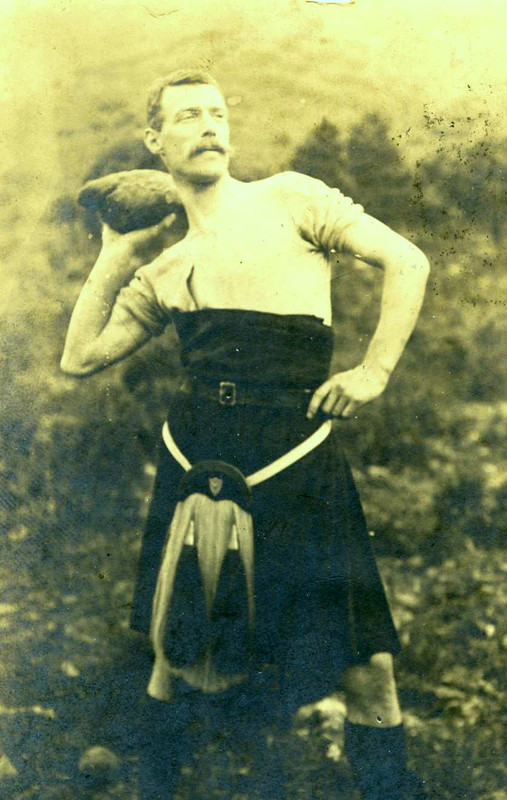
As Leather straps and the two-pronged buckles began to be seen on kilts (Around WWI) there was often one strap and buckle up at the top of the kilt on the right and one at the anatomical waist on the right to cinch in at the anatomical waist. This was the same as where the belt was worn over the tunic.
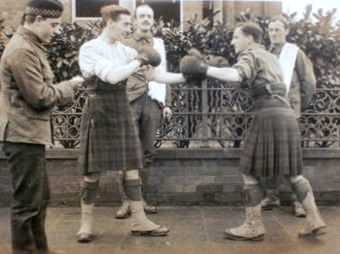
Since WWi the fabric kilts were made from began to be cut to the length of the wearer. But there was still a strap and buckle cinching it in at the anatomical waist, this was just a couple of inches below the top of the kilt due to the cut fabric and better tailoring.
But tradition said there were two straps on the right side. This caused what used to be the waist strap to be lowered to the hip. As this strap was not covered by the belt it took on a purely decorative function.
Many kilt makers today have learned that the hip strap is so often worn incorrectly that it was better to leave it off. Too many guys were thinking that the hip strap was functional and were tightening it. Which caused distortion of the apron.
So the hip strap and buckle are just left off.

Today if you have a Traditional kilt, made In Accordance With (AKW) "The Art of Kiltmaking" you will have three straps and buckles. Two on the right and one on the left. The top straps and buckles are covered by the jacket or the belt so are not seen.
The hip strap is decorative and while it is buckled, it is not cinched but fastened very loosely.
This -
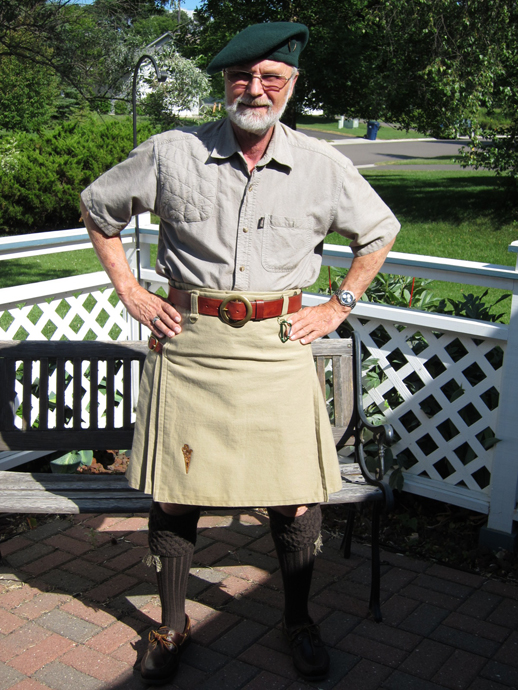
Or this -
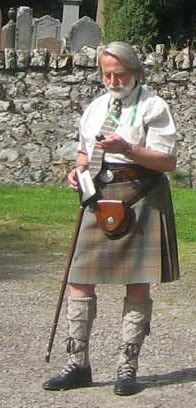
Last edited by Steve Ashton; 9th August 23 at 11:21 PM.
-
The Following 4 Users say 'Aye' to Steve Ashton For This Useful Post:
-
10th August 23, 02:59 AM
#3
 Originally Posted by kilted redleg

Does anyone know when the third buckle was added to the kilt. I know you can order kilts with just two buckles, when did three become the norm?
I cannot think of seeing an example before the 1960s, possibly later.
-
The Following User Says 'Aye' to figheadair For This Useful Post:
-
10th August 23, 05:38 AM
#4
-
-
10th August 23, 09:27 AM
#5
 Originally Posted by OC Richard

I saw a WWII photo where you can see a piper's kilt fastened at the waist with blanket pins. I'll try to find it.
This is not the photo you're referencing, and I don't know what year it's from, but ...blanket pins indeed.

-
-
11th August 23, 03:31 AM
#6
What a great photo!
That looks WWI to me, the biggest clue being the man background left wearing a gask mask bag as an ad hoc sporran.
I know some Canadian kilted units issued Other Ranks with leather sporrans in WWI, but it seems that few if any British kilted regiments did. Thus the common use of gask mask bags.
And in WWII it's generally only pipers, or the occasional officer, who are seen wearing kilts in the war zone.
Proud Mountaineer from the Highlands of West Virginia; son of the Revolution and Civil War; first Europeans on the Guyandotte
-
-
11th August 23, 05:28 AM
#7
Looks like the center man has a gas mask bag as well.
But can we talk about the 2nd man from the right and his belt? It looks like a collection of cap badges, with the Argylls front and center, and either the Seaforths or Gordons to the right.
"There is no merit in being wet and/or cold and sartorial elegance take second place to common sense." Jock Scot
-
The Following User Says 'Aye' to DCampbell16B For This Useful Post:
-
11th August 23, 06:38 AM
#8
You are right D CAMPBELL, looks like he also has a clay pipe in his mouth. We used to put badges on our belts when we were kids, wish I had kept them.
-
-
12th August 23, 04:30 AM
#9
 Originally Posted by DCampbell16B

But can we talk about the 2nd man from the right and his belt? It looks like a collection of cap badges, with the Argylls front and center, and either the Seaforths or Gordons to the right.
That belt is a beautiful example of "trench art".
Those decorated belts are called "trophy belts" by modern collectors.
Here's an article about one https://www.collectorsweekly.com/sto...wi-trophy-belt
Last edited by OC Richard; 12th August 23 at 04:37 AM.
Proud Mountaineer from the Highlands of West Virginia; son of the Revolution and Civil War; first Europeans on the Guyandotte
-
The Following 3 Users say 'Aye' to OC Richard For This Useful Post:
-
12th August 23, 03:15 PM
#10
Speaking of gas masks, there was still a fear of gas attacks during WW2. I remember going to school with my gas mask. Little kids had masks that looked like Mickey Mouse. They were not supposed to be as scary as the regular masks. Fortunately we never had to use them or the air raid shelter behind the school. Where we lived was a little out of range for bombers. There was a lone raider used to fly over now and again but he was not very effective. He only killed one guy I know of. There was a dance in a little village and someone got careless and let some light show. The raider saw it and let one bomb go. It hit the dance hall dead center went through the roof and drove one guy right through the floor. And didnít explode. He was the only one killed. He was my dadís helperís brother on the railroad.
-
 Posting Permissions
Posting Permissions
- You may not post new threads
- You may not post replies
- You may not post attachments
- You may not edit your posts
-
Forum Rules
|
|
Bookmarks